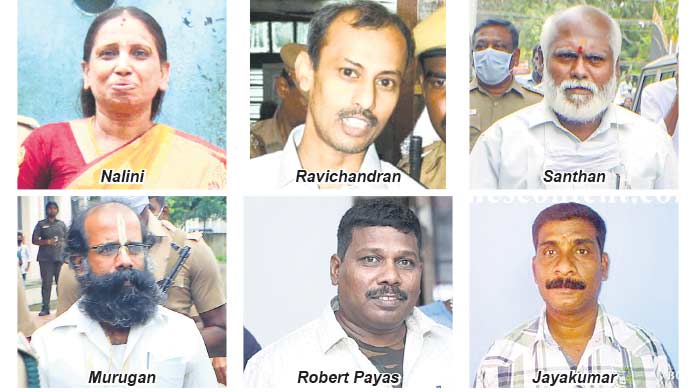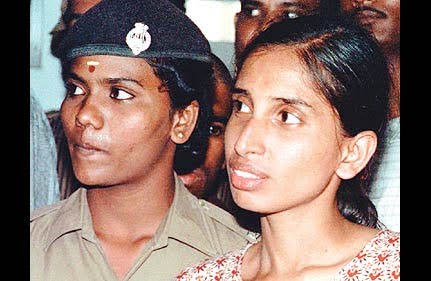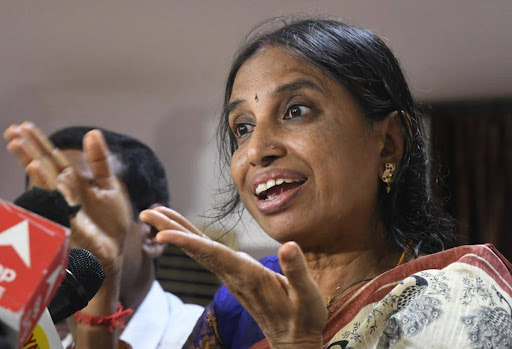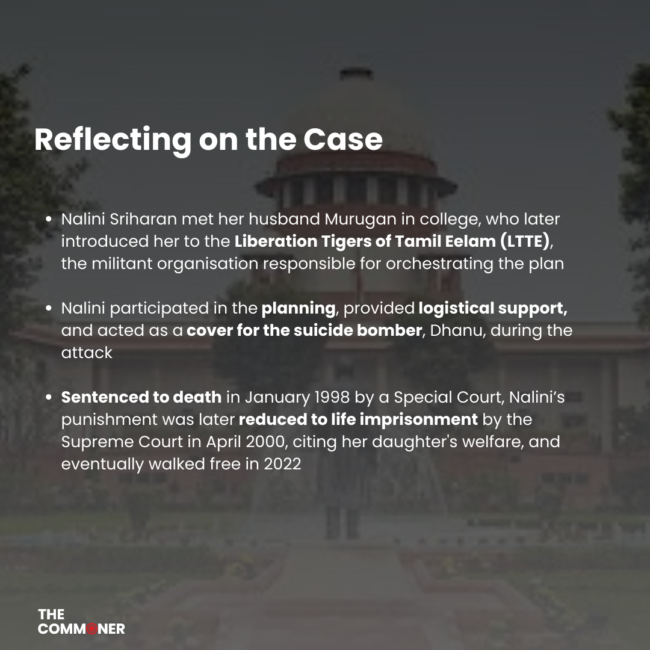The Dual Narratives Of Nalini Sriharan In Rajiv Gandhi’s Assassination

Nalini Sriharan is a name that resonates deeply in India’s modern history, primarily due to her involvement in the assassination of former Prime Minister Rajiv Gandhi. Her life, marked by dramatic turns and profound transformations, is both captivating and tragic.
Early Life and Education
Born on January 5, 1967, in a modest Tamil family in Ambalavanapuram, Nalini’s early years resembled those of any other girl from a middle-class Indian household. The Sri Lankan Civil War, a decades-long fight for an independent Tamil Eelam, had already begun, casting a long shadow over her childhood. “We grew up surrounded by violence,” Nalini recounted years later in a prison interview, highlighting the environment that shaped her early years.
Education and the Allure of Rebellion
Nalini Sriharan’s education took place at Ethiraj College for Women in Chennai, where she earned a degree in English Literature. However, her university years coincided with a period of growing ethnic tensions in Sri Lanka. These simmering conflicts fueled a sense of alienation among many young Tamils, including Nalini, who felt marginalized by the Sinhala-majority government. It was during this time that she met Murugan, who introduced her to the LTTE’s ideology and operations. Discontented with the political climate and drawn to the romanticized image of the LTTE as Tamil liberators, Nalini eventually became an integral part of their network. “I believed I was fighting for a just cause,” she explained, reflecting on her motivation for joining the LTTE.

SC frees Rajiv Gandhi’s killers
Source: Nagaland Post
Nalini Sriharan wasn’t a bystander in Rajiv Gandhi’s assassination – she was a central figure. The LTTE trained her in explosives and planning, and she went above and beyond a simple follower’s role. Alongside other LTTE members, she meticulously stalked Gandhi’s movements, choosing the perfect time and place to strike. Her support for the assassination team went beyond ideology; she secured safe houses and ensured they had the resources needed for the mission. On May 21, 1991, the day of assassination, Nalini even accompanied Dhanu, the suicide bomber, to the rally. Nalini’s calculated presence helped Dhanu get close to Gandhi and blend into the crowd, allowing the deadly act to unfold.
Nalini was not a passive participant. The LTTE would not have entrusted such a crucial mission to someone they couldn't rely on completely.
Subramanian Swamy, a prominent Indian politician
Jail Life
Following her arrest, Nalini was convicted and sentenced to death by a special court in 1991.While in prison, Nalini discovered she was pregnant. She gave birth to her daughter, Harithra, in prison in 1992. Sonia Gandhi, Rajiv Gandhi’s widow, appealed for clemency, citing Nalini’s pregnancy at the time of the sentencing. This intervention resulted in a life sentence instead. During her time in Vellore Central Prison, Nalini transformed herself through education and rehabilitation.
Nalini has spent more than two decades in prison, and her behavior has been exemplary. She deserves a chance to reintegrate into society.
Former Tamil Nadu Chief Minister M. Karunanidhi
Nalini completed several educational courses while in prison, highlighting her commitment to personal growth and transformation. Her conduct in jail was often cited as a model of reformation.

Nalini Shifted From Vellore Jail
Source: India TV
Court Journey

Nalini hopeful of visiting the U.K. with her husband to be with her daughter
Source: The Hindu
Nalini’s legal journey has been complex and fraught with challenges. Her initial death sentence was reduced to life imprisonment, but this was just the beginning of her long legal battle. Over the years, Nalini filed multiple petitions seeking early release and parole, emphasizing her good behavior and the prolonged duration of her imprisonment. In 2008, Priyanka Gandhi Vadra, Rajiv Gandhi’s daughter, visited Nalini in prison.
Meeting Nalini was my way of coming to terms with the violence and loss. It was an emotional moment.
Priyanka Gandhi

Freeing and Present Condition
In November 2022, after serving over three decades in prison, Nalini Sriharan was released. Her release sparked mixed reactions across the political spectrum. Rahul Gandhi, Rajiv Gandhi’s son, acknowledged the judiciary’s decision, saying,
The law has taken its course, and we respect the judiciary's decision, but the pain of losing my father will always remain.
Rahul Gandhi
Conclusion
Nalini Sriharan’s involvement in the assassination of Rajiv Gandhi had a profound impact on the nation, reshaping India’s political landscape and altering the course of its history. The assassination highlighted the reach and influence of the LTTE, leading to heightened security measures and significant changes in India’s counter-terrorism strategies. The legal proceedings and debates surrounding Nalini’s sentencing and eventual release also sparked widespread discussions on justice, forgiveness, and the rehabilitation of convicted terrorists. Her case remains a pivotal moment in India’s ongoing struggle with political violence, influencing public policy and national security priorities for decades.

